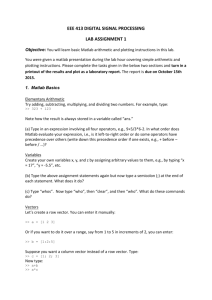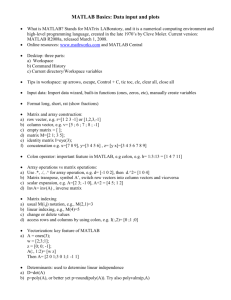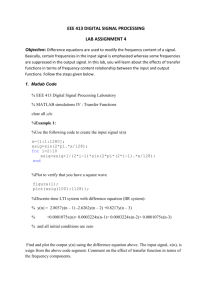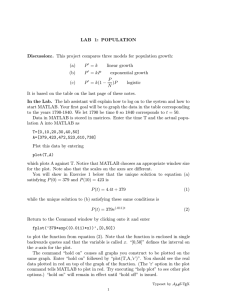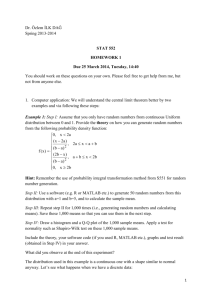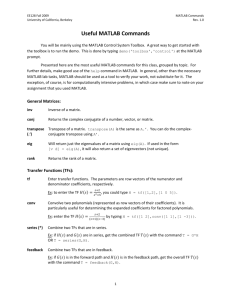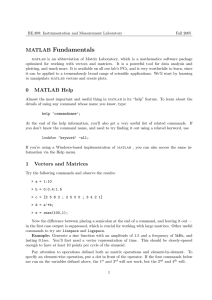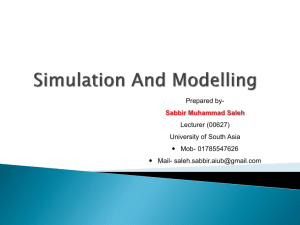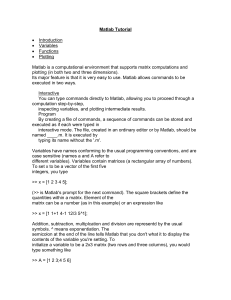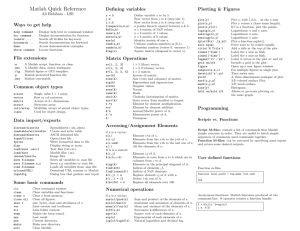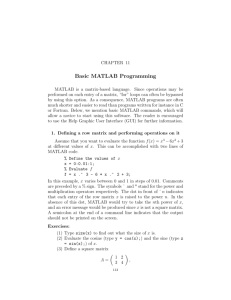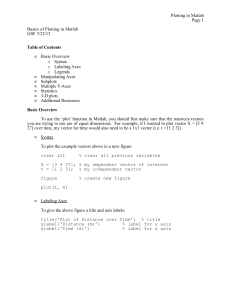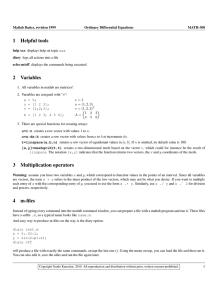ECE 445: Homework #6 - Sergio Servetto
advertisement
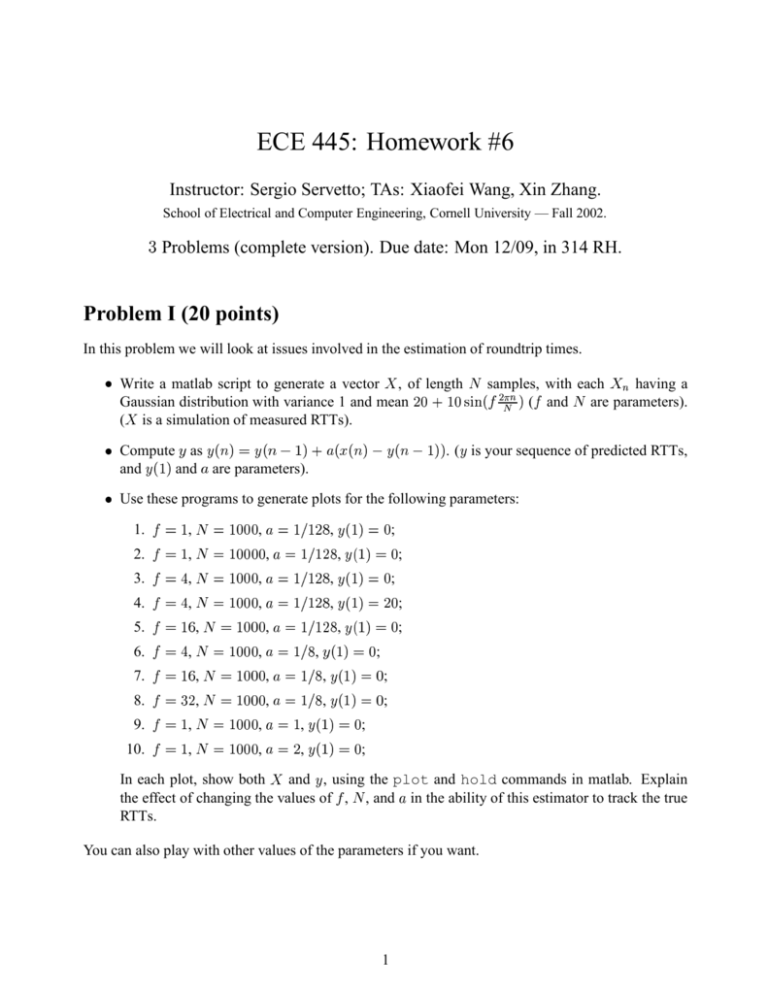
ECE 445: Homework #6
Instructor: Sergio Servetto; TAs: Xiaofei Wang, Xin Zhang.
School of Electrical and Computer Engineering, Cornell University — Fall 2002.
Problems (complete version). Due date: Mon 12/09, in 314 RH.
Problem I (20 points)
In this problem we will look at issues involved in the estimation of roundtrip times.
samples,
with each having a
( and are parameters).
Write a matlab script to generate a vector , of length
Gaussian distribution with variance 1 and mean
( is a simulation of measured RTTs).
"! # $!%& (')+*,"! %- "!%& . (
Compute as
and
and are parameters).
. '
is your sequence of predicted RTTs,
Use these programs to generate plots for the following parameters:
# /00 , ' # 21354 , . 6# ;
# /000 , ' # 217254 , 8 # ;
2.
# /00 , ' # 21354 , . 6# ;
3.
# /00 , ' # 21354 , . 6# 5 ;
4.
# 00 , ' # 217254 , 8 # ;
5.
# /00 , ' # 2154 , . 6# ;
6.
# 00 , ' # 214 , . <# ;
7.
# 00 , ' # 214 , . <# ;
8.
# /00 , ' # , 8 # ;
9.
# /00 , ' # , 8 # ;
10.
In each plot, show both and , using the plot and hold commands in matlab. Explain
the effect of changing the values of , , and ' in the ability of this estimator to track the true
1.
# ,
# ,
#:9 , #:9 , # ; , #:9 , # ; , #>= , # ,
# ,
RTTs.
You can also play with other values of the parameters if you want.
1
Problem II (40 points)
Write a matlab program that, given a vector of RTT measurements (like the vector in Problem I),
computes the sequence of window sizes after receiving an acknowledgement with these RTTs. Then:
Plot the evolution of the window size using
1.
2.
3.
# , # /00 ;
#:9 , # /00 ;
# ; , # 00 ;
above with parameters:
A @ # B
?
Suppose now that packets get lost with probability . We model this by letting
(with
probability
), and
(with probability ). Plot the window evolution as above, for
, and for
. Explain the new window plot that you observe.
# C%D?
@ #FE
#
? HGI5H0JKHGLH0JMHGN5JKHGIO
?
You can also play with other values of the parameters if you want.
Problem III (40 points)
Write a matlab program to simulate the Aloha protocol, stabilized using Rivest’s algorithm, as discussed in class:
You are given the number of nodes
P
Q
in the system, and the total arrival rate .
Your program has to maintain as state information:
!R
– An estimate of the current backlog size, .
– A state vector (
), indicating whether the -th node is backlogged or free.
S/T U # 0GVGNGWP
At each step of the simulation:
U
U
XY .0JZ21\ [] 1. If node is backlogged, toss a coin with probability
. If not, generate a new
packet to send with probability .
2. Count of the number of packets to be set in the current step.
3. If the number of transmission attempts is 0, then update the backlog estimate as
.
4. If the number of transmission attempts is 1, then there was no collision. Update
, and set the state of the node that generated this packet to free.
5. If the number of transmission attempts is greater than 1, then a collision occurs at the
current time step. Update
, and set the state of all nodes that generated
packets to backlogged.
_^
!a
R `
Xcb2de/!YR (Qf%&5JgQ !h
R `
Xcb2de/!YR (Qf%&5JgQ !iR ` !R jQB k.l [ Using this simulation, you have to generate some plots:
!R
Put in the same plot both and the true size of the backlog, in the vertical axis, and simulation
time in the horizontal axis.
m
Repeat the previous plot, but now retransmission probabilities are a constant , independent of
.
!R
Q # HGn , P # 0 , and m # HGLH0JK3GnO .
To generate these plots, use as parameters
happens to the average throughput in both cases.
2
Explain what
